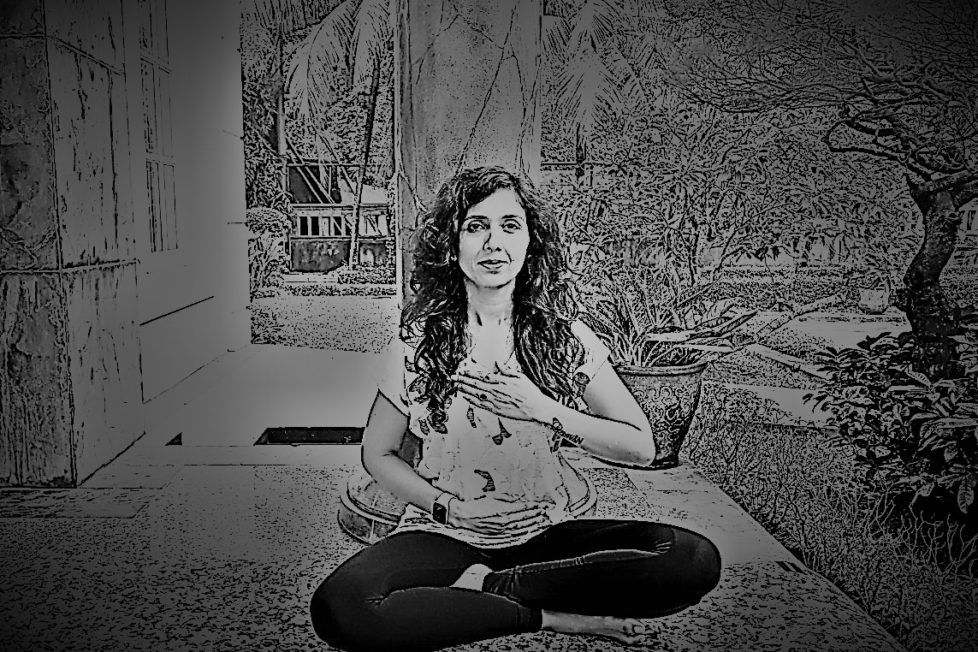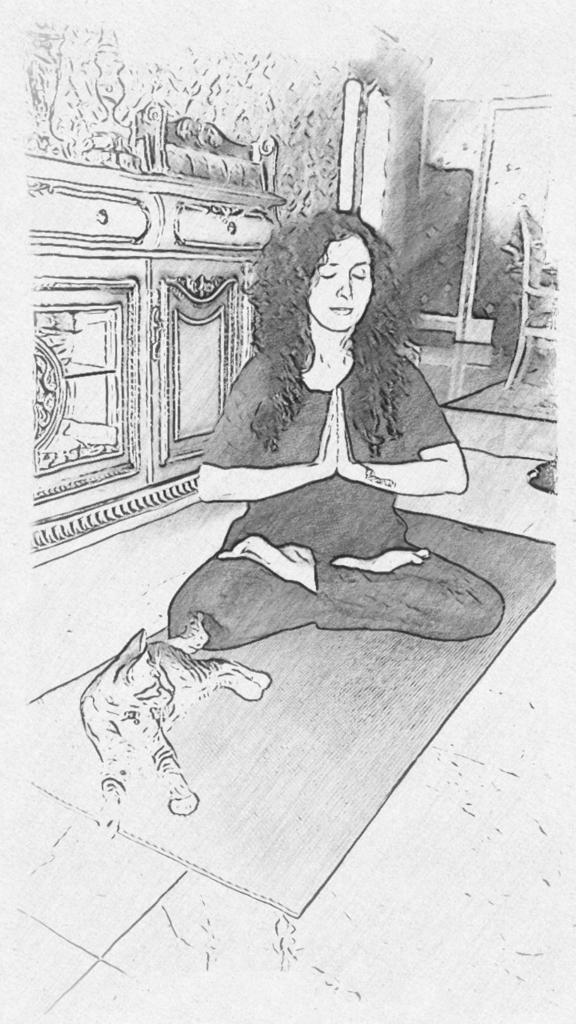Day-43 Pranayama -Mitraasha



Knowledge of Yoga is infinite, boundless and timeless. “Learning Yoga is an everlasting journey that leads you within and Within is where you find the world of immortal bliss”. –Mitraasha
Namaste All My Yoga Yaatris! May Yog Bless You!
The idea behind running this 51 Days Yoga Consciousness series is to proffer my modest learnings and share the divine pearls of Yoga science with people at large. Let’s have a conjoint intent to learn, implement and extend the wisdom of Yoga with a positive co-action and harmonious reverberation amongst each other.
In Yoga, Pranayama is the technique to attain control of breath, however the contemporary yoga practices inculcate synchronising of the breath with movements of asanas and also as a stand alone breathing exercise generally performed after asanas practice.
Yoga practices of the modern day are very different from the ones mentioned in the Vedas. The ancient yoga practice transcended through various stages ranging from dedication to physical exercises, to the urge of seeking knowledge. Although currently practitioners relate yoga with the performance of only physical postures at large, the ancient texts on yoga spoke of postures merely, and instead emphasized on the importance of attaining liberation through meditation and pranayama practices. Pranayama- the breath control technique continues to remain an integral part of yoga and is believed to aid not only the command over one’s breath but also to instill clarity and help to reinstate the body’s natural flow of energy.

As per one of the earliest vedic texts on Indian medicine: The Atharvaveda, prana is the fundamental basis of whatever is, was, and will be. The word pranayama is a Sanskrit term where prana means the life force or vital energy and yama is considered as restraint or control.
Efficient performing of the prana, which is the guiding power for all the functions of the body, results in systematic working of various functions such as eating, ingesting, digestion, and physical movement.
It is believed that the root cause of almost all physical and mental ailments lies in the imbalance of the body’s energy flow. Pranayama practices serve as a powerful tool to heal illness and correct mental imbalances. Hence, pranayama is accordingly stated as a technique practiced to control prana within the human body through different breathing exercises in meditative postures with physical locks; as the controlling of breath is the straight and supervised way to influence the life forces.
Prana-the vital life force supports our life, nurtures our organs, supports in relieving the waste out from our body, and influences our emotional health by feeding our nervous system too. The act of breathing is not only mandatory to sustain life but it can play a transcendental role in our yoga practices.
Pranayama-the regulated inhalation and exhalation with suspension and retention of breath, helps rejuvenate the red blood cells formation, instills general soothing, calmness and emotional tranquility and thereby helps the heart to maintain its pressure and pumping rate.
It enables the practitioner to delve deeper into a pose or relaxation, relieve all distracting thoughts and emotions, and aid to replace them with positive and peaceful ones.
As per yogic texts, the mind is divided into four aspects: chitta, buddhi, manas and ahamkara(ego). The container of this mind which is our body is also further classified into 5 layers or koshas(sheaths). The second layer/sheath while going from outward-inward is Pranamaya kosha(sheath), it is the energy level and holds our life forces that exhibit as breaths to us. Mind is inherently very zestful and hence it is placed in the Pranamaya layer. From here ego makes its way through the body traversing through the subtle nerves called Nadis-the energy conduits, before releasing out and confronting the world. Attaining control on the functioning of the Nadis further assist to control the ego, the mind and the senses.
As per sage Patanjali’s Yoga Sutras, pranayama aids in attaining higher states of awareness and reaching Samadhi by controlling and holding of breath. The 5 types of prana that are responsible for different pranic functions in the body are Prana, Apana, Vyan, Udana & Samana, out of which Prana and Apana are most vital. Prana flows upwards and Apana flows downward. Pranayama practices support to attain the balance in the flows of these pranas resulting in a healthy body and mind.
Pranayama technique deals with the life symbol, i.e. breathing, and as per Hatha Yoga texts, to be successful in this technique one needs to have a recluse environment, a distinct mindset and to adhere to strict living norms.
This often becomes challenging for a householder, and thus if techniques done wrongly/unscientifically or without proper guidance may do harm to them. However that should not dissuade common people from trying this. With expert guidance, patience, faith, regular practice and beginning with easier pranayama initially and then eventually moving on to intense practice will definitely give its timely benefits.
Besides some generic benefits, each pranayama has their own unique advantage and benefit that a practitioner can experience. The common benefits are: It instills mindfulness, breathing awareness, calming effect on mind, clarity of thoughts, increased efficiency and productivity, enhanced memory and concentration, aids in regulating emotions, rejuvenates mind–body coordination, decreases impulsive behaviour, increases stamina, boosts energy levels of both body and mind, stabilizes the mind and body, induces relaxation, inculcates feelings of letting go, self-discipline, confidence and elevated positivity.
Although there are many types of Pranayamas taught by different schools of yoga, we will be looking at only a few most practiced ones in the coming days. Stay tuned!
Thought of the day: “Pranayama teaches the aspirant to regulate his breathing and thereby control the mind.”- B.K.S Iyenger
Link for day 42: Shavasana-The Copse Pose https://kreately.in/day-42-shavasana/
Link to day 44: Pranayama: Sheetali & Sitkari https://kreately.in/day-44-pranayamas-sheetali-sitkari/
DISCLAIMER: The author is solely responsible for the views expressed in this article. The author carries the responsibility for citing and/or licensing of images utilized within the text.
